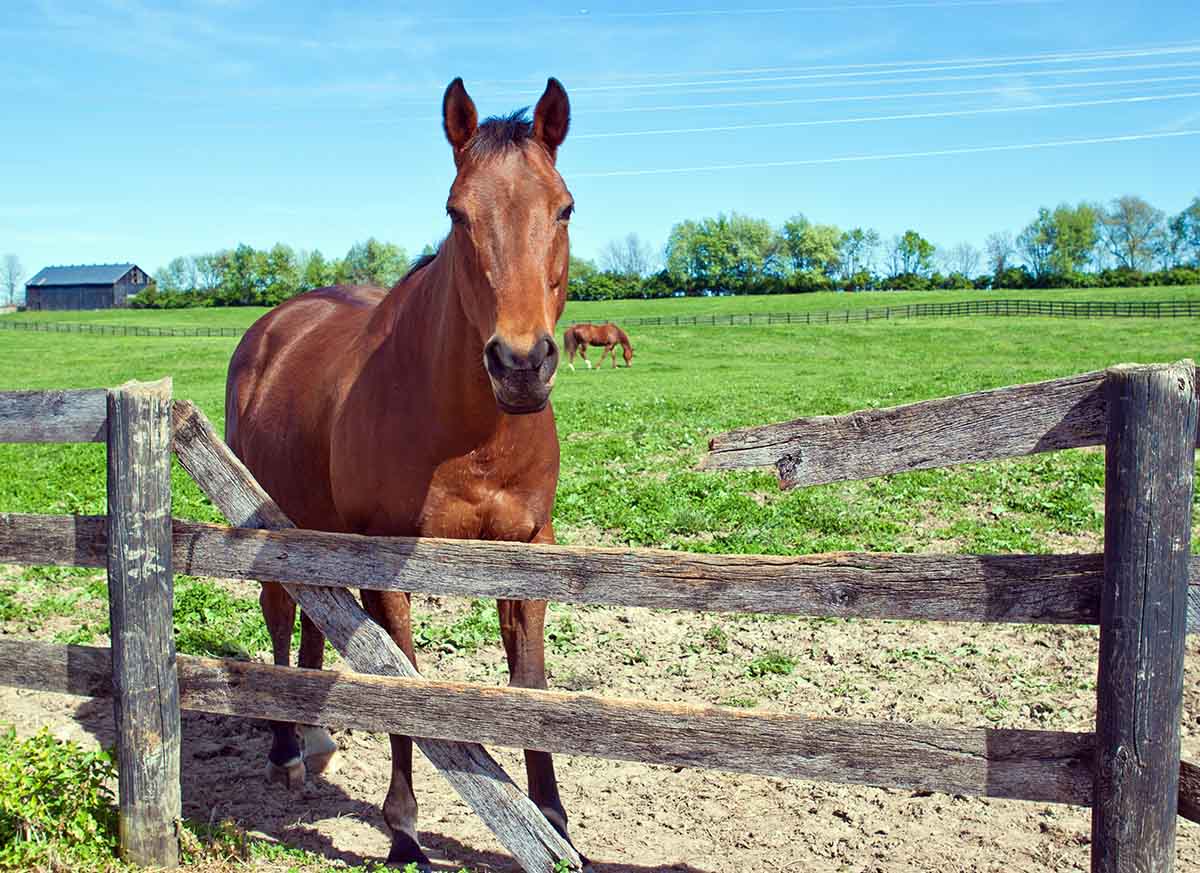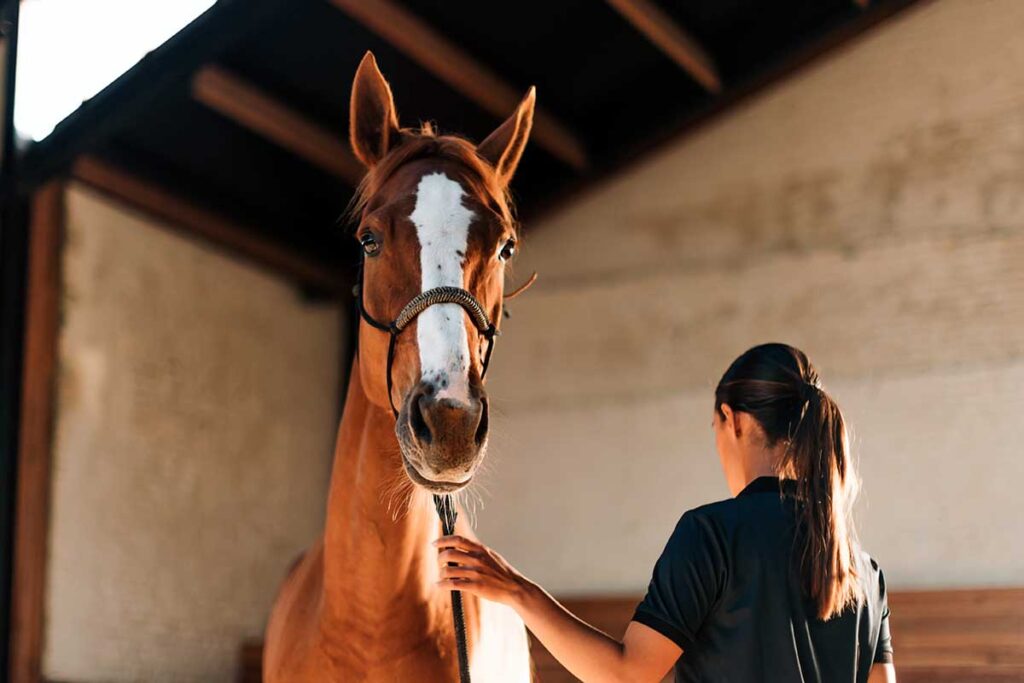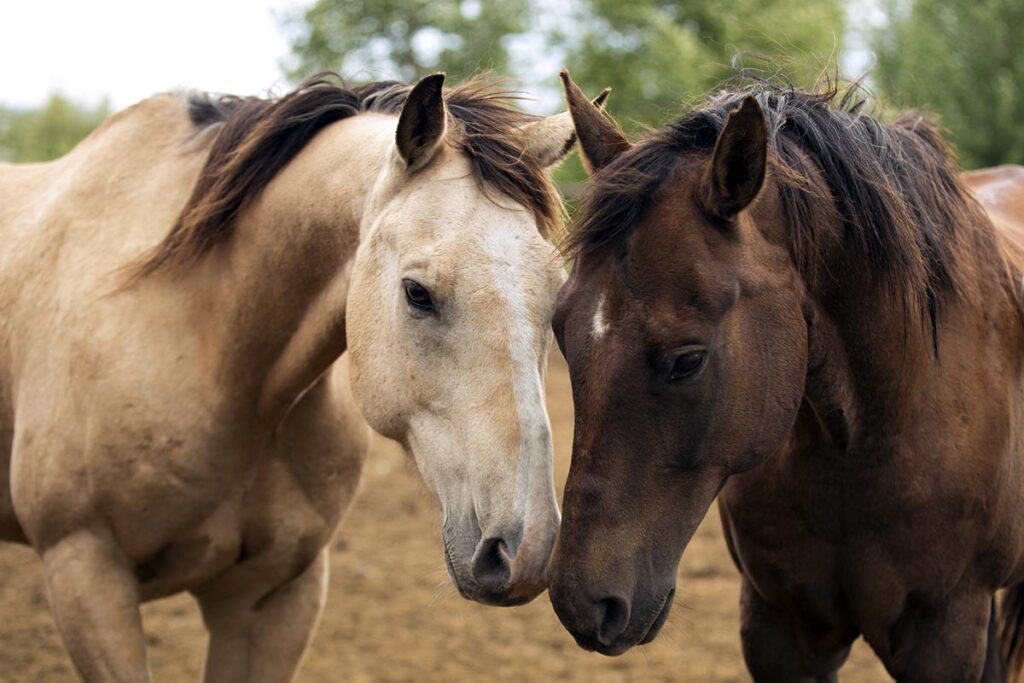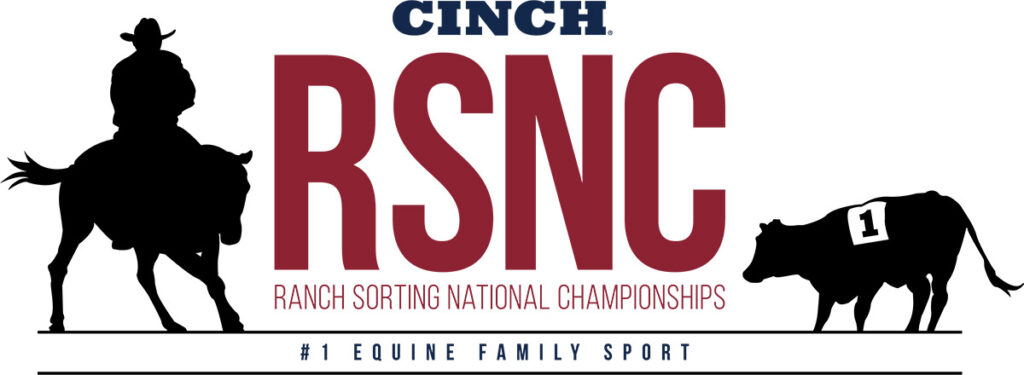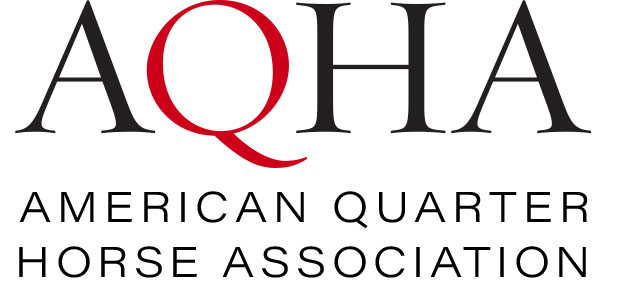Housing a horse requires some form of shelter—generally a stall or a run-shed—and a paddock or field. Whether you’re trusting a boarding facility to care for your equine companion or keeping him on your own property, here are some horse stall and paddock safety tips to ensure your horse is secure in his home.
Safe and Sound Horse Stalls
Let’s start with the stall. Here are six ways to make sure your stable is free of dangers:
1. You have a secure stall gate and latch.
With a bit of dexterity and patience, some horses can learn to undo latches and open doors with their lips and teeth. If you have a Houdini in your barn, make sure to invest in a “complex” fastener. This can be a second latch at the bottom of the stall door or one that requires two hands to operate.
2. Stall bars are narrower than horse legs.
Most stalls have vertical metal bars, whether in the wall dividing them or in the upper half of the stall door. If a horse can fit his foot and leg in between stall bars, he risks getting stuck and injuring himself.
3. The walls are smooth and sturdy.
While wearing gloves, run your hand carefully along each stall wall to ensure no large splinters or rusty nails come sticking out to poke you. Additionally, the walls should be strong and sturdy enough to withstand a horse kick.
4. The water and grain buckets are in good repair and hung correctly.
When they break, plastic buckets create sharp edges that can lacerate eyelids and puncture eyeballs (ouch!). Replace them right away. Position any clips or hooks so nothing sharp or pointy faces the horse when he nosedives into the bucket.
5. The horse can’t access lights …
Think of all the ways your horse could injure himself if he became agitated in his stall. If he rears straight up, will his head hit—and probably break—a glass light bulb? While you can’t raise the barn’s ceiling, you can install protective plastic casing around any exposed bulbs.
6. … or fire alarms!
Speaking of protective casing, my friend’s horse recently made the local news for reaching his head out of his stall and pulling the fire alarm with his lips. The entire fire department came out, prompting a protective plastic case to be fitted to the alarm. Make sure any outlets, switches, and alarms are out of your horse’s reach. If that’s not possible, have them properly encased.
Horse Pasture Precautions
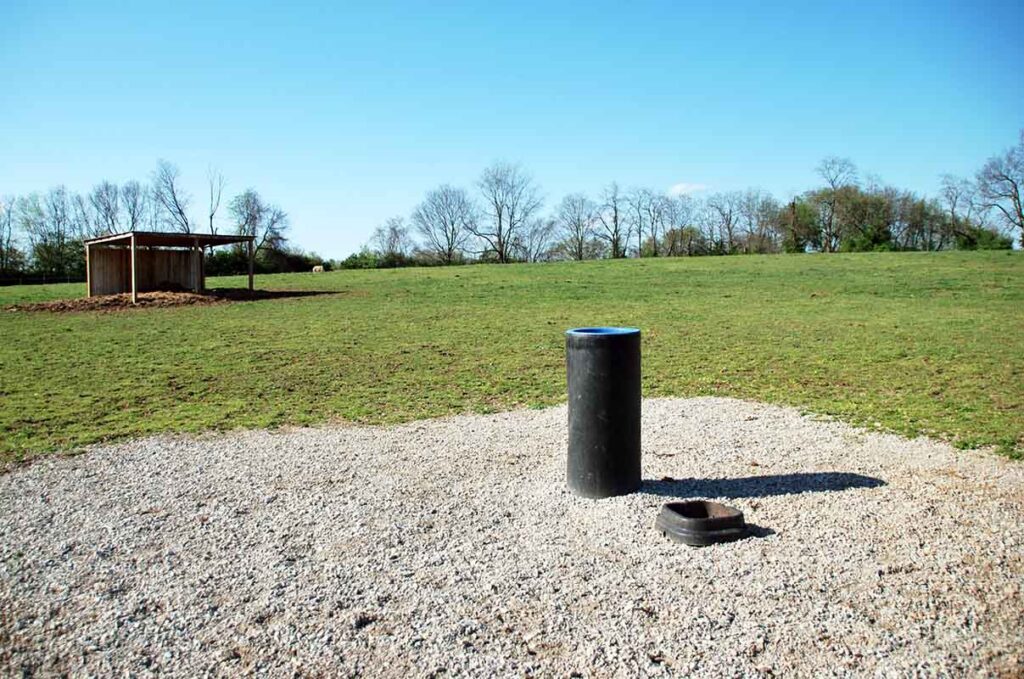
Now that we’ve made sure your horse’s stall is secure, let’s walk out to his field and check off six more safety items:
1. The paddock has a secure gate and latch.
You’re probably noticing a common theme across all horse enclosures: a secure, reliable way to keep said horses safely within. That being said, never lock horse stalls or fields in case of a fire or other emergency. No padlocks on paddocks!
2. The fencing is safe and well-maintained.
A broken fence board creates an escape route for animals. Also check the fenceline for loose or rusty nails sticking out of boards. If the fencing contains electrical wire, make sure it is taut so a horse is less likely to get tangled up should he accidentally run into it. Barbed wire is very sharp and tangles easily; therefore, it is not appropriate fencing for horses.
3. The ground is free of holes, debris, and machinery.
You don’t need a perfectly flat, smooth surface for your horse’s turnout, and some topography is actually good for their fitness and agility. But deep holes dug by wildlife can have catastrophic consequences if a galloping horse encounters one. Walk the entirety of your horse’s field regularly, scouring for dangers like holes and lost shoes. Don’t store tractors or other machinery in your horse’s field. They not only pose injury risks but might also contain lead-based paint that could cause lead toxicity if your horse licks them.
4. The water trough is safe and functional.
If the water trough in the field is heated in winter, make sure the wiring is installed and secured properly so there is no risk of electric shock. If it’s not heated, have a plan in place for ice management in winter. More often than not, this simply means having someone break the ice with a rock or hammer throughout the day.
5. The mud is managed properly.
Mud is generally more of an annoyance than a safety problem, but standing in excessively damp, sloppy conditions for extended periods can cause skin problems on your horse’s legs and weaken his hooves. Horses are also at risk of slipping and “wiping out” while running in deep mud. A realistic expectation for mud management is having good drainage and, ideally, rubber mats with drainage holes in grid patterns in high-traffic areas—around the gate, water trough, and hay pile(s). A layer of crushed stone and densely graded aggregate in these areas can also help.
6. The herd dynamics are (relatively) peaceful.
Horses running and playing in the field is both normal and healthy. It takes time for a new horse to fit into the hierarchy of an existing herd. But if a herdmate is bullying your horse constantly, you might need to revisit his turnout situation to find a safer arrangement.
Take-Home Message
Equestrians often say if there is a way for a horse to get hurt, he will find it! Since wrapping your equine companion in bubble wrap isn’t exactly practical, checking his stall and paddock regularly for potential dangers is your best shot at sparing him from trouble—and yourself from some hefty veterinary bills.
Related Reading:
- Home Sweet Home: A Guide to Horse Housing Options
- How To Decide Between a Stall, Pasture, or Both for Your Horse
- Choosing the Right Type of Fencing for Your Horse
Lucile Vigouroux, MSc, holds a master’s degree in Equine Performance, Health, and Welfare from Nottingham Trent University (UK) and an equine veterinary assistant certification from AAEVT. She is a New-York-based freelance author with a passion for equine health and veterinary care. A Magnawave-certified practitioner, Lucile also runs a small equine PEMF therapy business.
Are you enjoying this content? Sign up for My New Horse’s FREE newsletter to get the latest horse owner info and fun facts delivered straight to your inbox!

